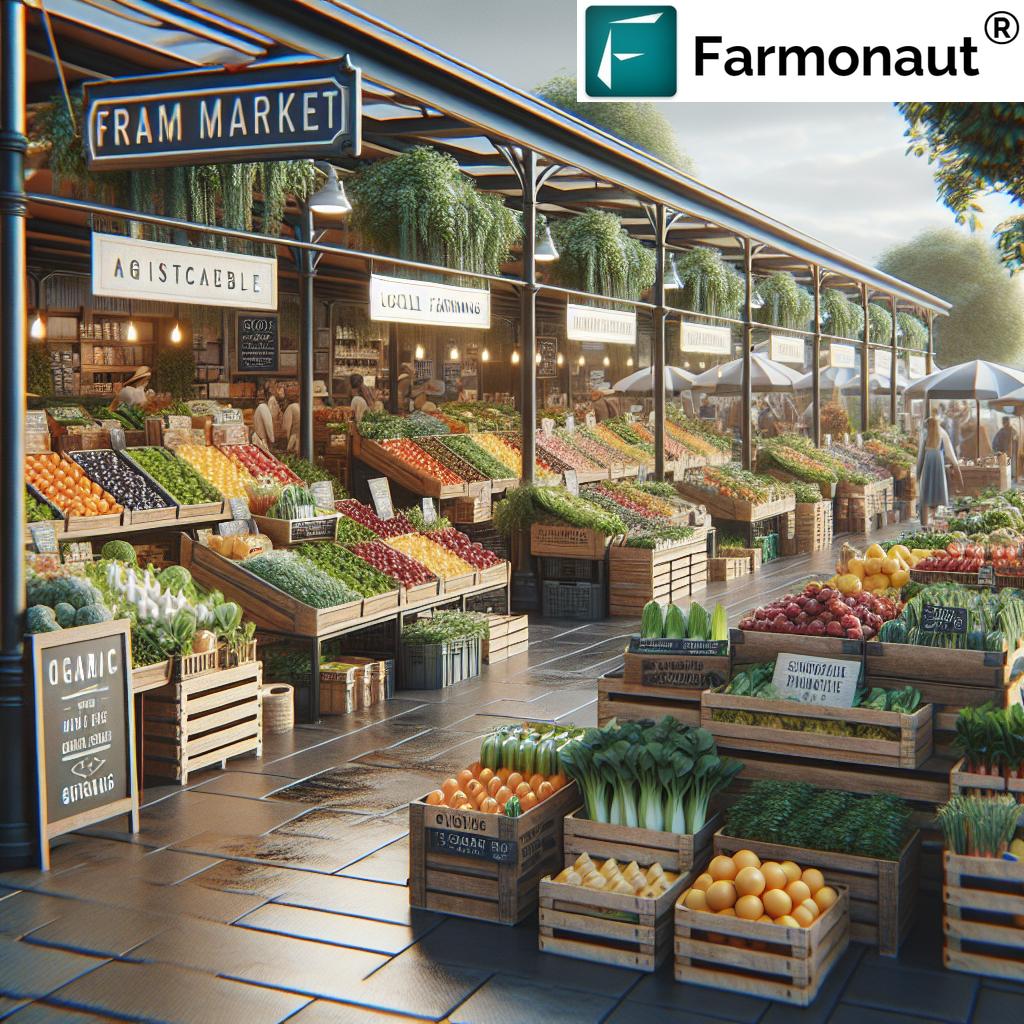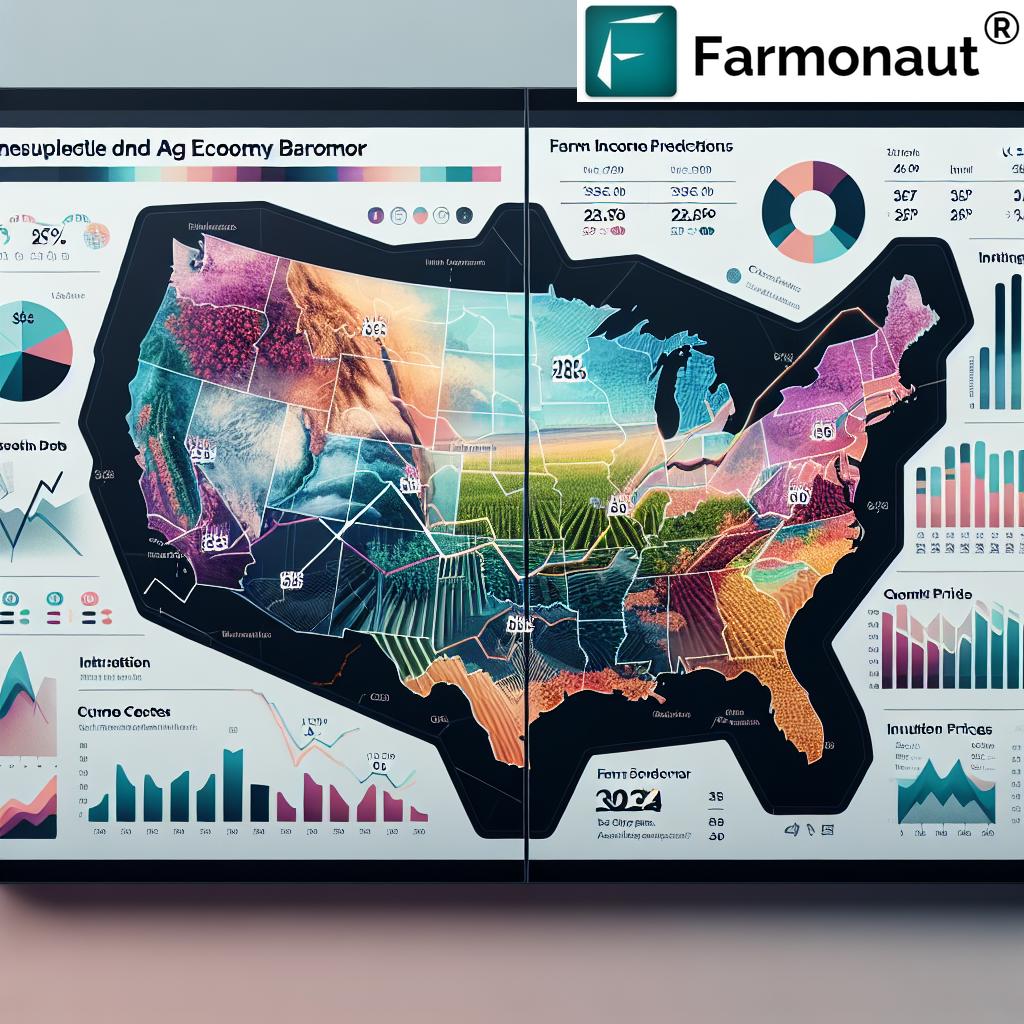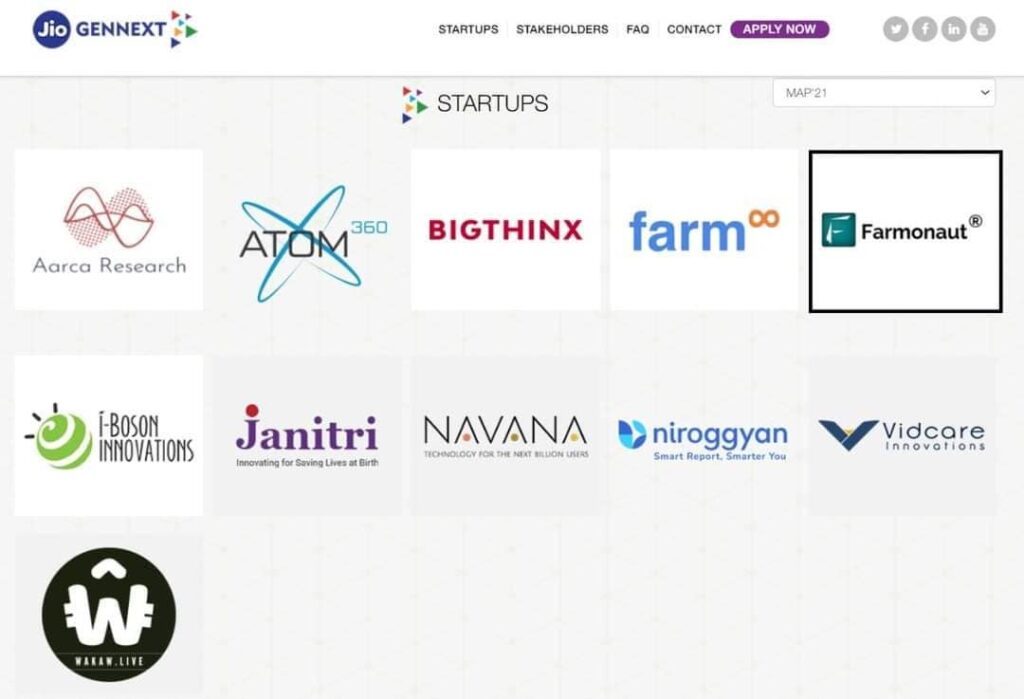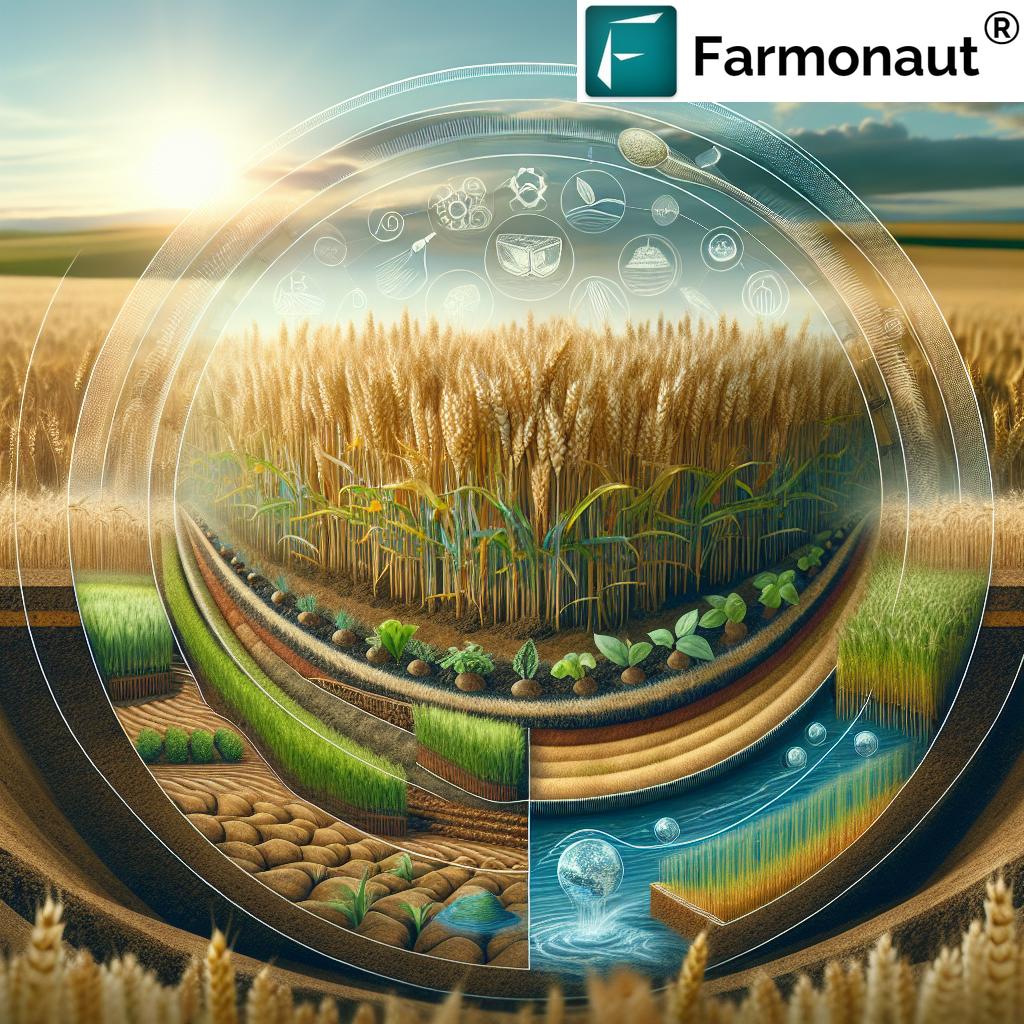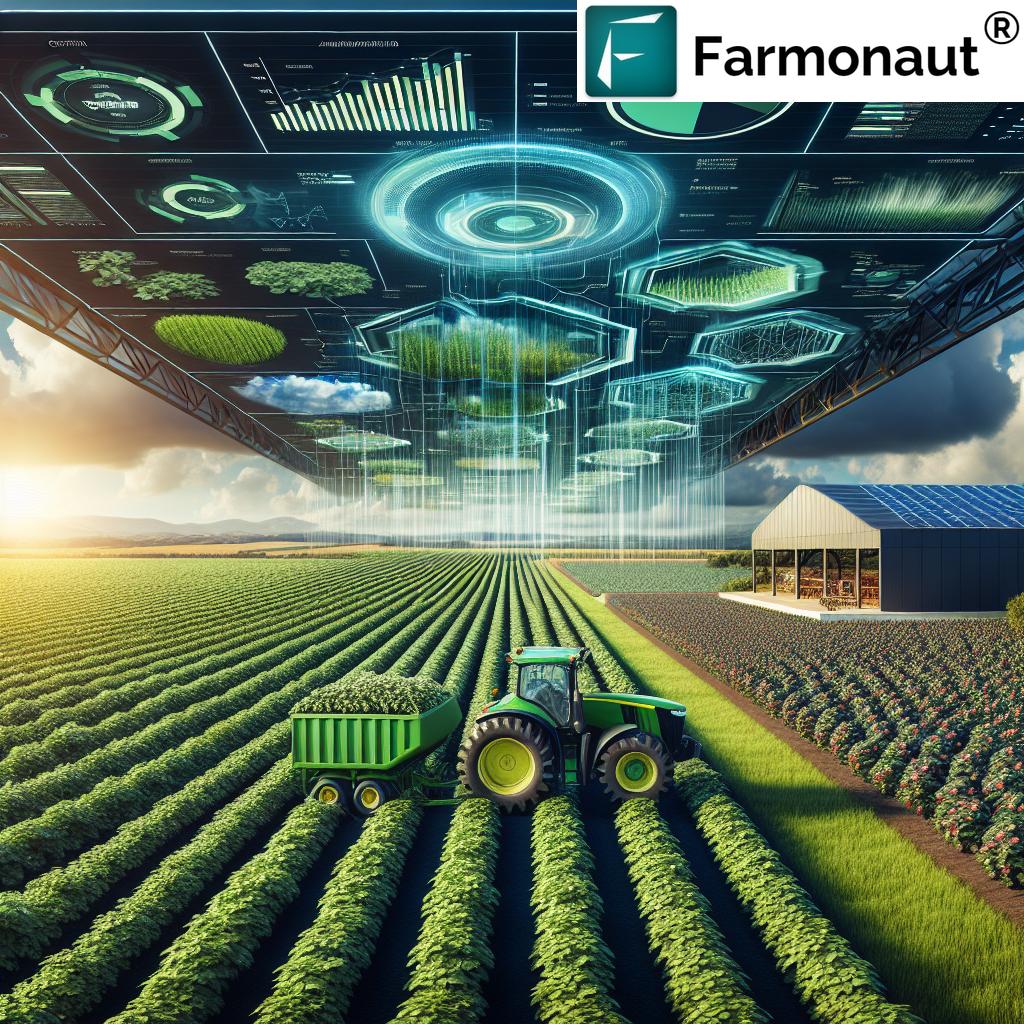Agriculture Marketing: 7 Powerful Strategies for 2024 Trends
Unlock the latest agricultural marketing strategies and digital agriculture trends destined to drive farm profitability, sustainability, and trusted consumer relationships in 2024. From direct to consumer agricultural sales to blockchain in agriculture supply chain solutions, our in-depth guide arms farmers, producers, and agri-businesses with actionable insights to excel in a rapidly evolving industry.
Table of Contents
- The Importance of Agricultural Marketing
- Traditional Agricultural Marketing Strategies
- Contemporary Strategies in Digital Agriculture Marketing
- Emerging Trends in Agricultural Marketing for 2024
- Agriculture Marketing: 7 Powerful Strategies for 2024 Trends
- Comparative Table: Marketing Strategies Impact
- Implementing Effective Agricultural Marketing Strategies
- Farmonaut’s Role in Modern Agricultural Marketing Strategies
- FAQ: Agricultural Marketing Strategies & Trends
- Conclusion
The Importance of Agricultural Marketing
Agriculture marketing is the heartbeat of the farming industry. It comprises essential strategies and processes for connecting farmers and producers to their target markets, and driving sales of agricultural products efficiently from farm to consumer.
- Market Access and Profitability: Robust marketing techniques enable us to reach profitable markets and earn fair compensation for our produce.
- Consumer Education: Through targeted education, we inform buyers about the unique benefits and origins of our products.
- Supply Chain Efficiency: Strategic management of the agriculture supply chain optimizes distribution and reduces waste.
- Sustainability and Growth: Highlighting organic and locally sourced goods supports sustainable farming practices and elevates brand value.
With the rapidly evolving needs of the farm to table marketing ecosystem, agricultural marketing strategies must embrace innovation while retaining the core values of trust, transparency, and quality.
Why is agricultural marketing more important than ever?
As global trends shift toward sustainability and digitalization, our ability to communicate quality, origin, and environmental responsibility is paramount. Modern marketing delivers transparency and fosters strong customer relationships, directly impacting our profitability and growth.
Traditional Agricultural Marketing Strategies
Before the digital revolution, farmers relied on community-driven and local channels to circulate their products. Let’s review classic yet still-relevant approaches:
-
Farm Gate Sales:
This method involves selling produce directly from the farm—via roadside stands or on-farm stores—leading to personal connections and optimal retail price capture. -
Farmers’ Markets:
Participation in local markets increases exposure, builds community engagement, and provides consumers access to fresh produce. The farmers market benefits include immediate feedback, loyalty, and market insights. -
Community Supported Agriculture (CSA):
CSA (Community Supported Agriculture) fosters direct investment in seasonal produce. Subscribers pre-pay and receive regular shares, ensuring upfront capital and stable sales.
These foundational strategies remain vital for smallholder farms and those prioritizing local food systems and relationship-based sales.
Contemporary Strategies in Digital Agriculture Marketing
The marriage of technology and agricultural marketing strategies is empowering us to reach farther, faster, and more effectively than ever before. Some standouts include:
-
Digital Marketing and E-commerce: Websites, social media, and online marketplaces now play central roles in promoting products and streamlining selling for both broad audiences and niche buyers.
Tip: Local food brands with robust digital presence witness increased customer engagement and repeat business. -
Educational Marketing:
Organizing farm tours, sharing farming practices, recipes, and nutrition information positions us as experts and builds consumer trust. -
Collaborative Marketing:
Joint promotions with local businesses (such as retailers or restaurants) amplify visibility and can create unique bundled goods that excite the market.
Blending traditional and digital methods is key for market resilience, farm profitability, and maximized consumer reach.
Emerging Trends in Agricultural Marketing for 2024
The landscape of agricultural marketing is being reimagined. Our industry is witnessing the rise of the following influential trends:
-
Digital Agriculture and Big Data
Collecting and leveraging data through satellite imagery, IoT, and AI technologies enhances everything from crop management to market analysis. Efficient use of high-quality data empowers more precise, profitable, and sustainable farming operations. -
AI and Automation
AI-driven advisory systems and automation streamline resource deployment, predict market needs, and cut operation costs—redefining ag business efficiency and sales strategies.Farmonaut’s Jeevn AI Advisory System delivers personalized, real-time crop advice for maximized yield and operational savings.
-
Sustainability and Regenerative Agriculture
Today’s consumers, especially in thriving urban centers in regions like North America, Europe, and India, demand sustainable farming practices, organic farm products, and support regenerative approaches that safeguard soil health and biodiversity.
Discover Farmonaut’s Carbon Footprinting tools to track, improve, and showcase your environmental impact to increasingly eco-conscious markets. -
Blockchain for Supply Chain Transparency
Blockchain in agriculture supply chain adds a layer of verifiable traceability, assuring end buyers of quality, origin, and authentic practices.
Utilize Farmonaut’s blockchain-based traceability solutions for secure, transparent farm-to-table product journeys. -
DTC (Direct-to-Consumer) Sales Models
DTC channels are exploding, enabling farmers to bypass middlemen, build customer loyalty, and realize better profit margins through online stores, home delivery, and CSA systems.
Adoption of these emerging trends futureproofs our farm enterprises and aligns us with both societal demands and next-generation customer expectations.
Agriculture Marketing: 7 Powerful Strategies for 2024 Trends
Let’s explore the top 7 strategies that are shaping progressive, competitive, and sustainable agri-businesses this year:
-
1. Omni-Channel Digital Marketing
Harnessing the synergy of website, social media, email, and digital ads transforms how we target and re-engage customers. It provides measurable results and broadens our market beyond traditional boundaries. -
2. Direct to Consumer (DTC) Sales and Online Stores
These models leverage e-commerce platforms and dedicated DTC channels to sell products directly, cutting costs, improving margins, and fostering direct relationships with our buyers. -
3. Storytelling and Transparency via Blockchain
Detailed, verifiable information about the creation, origin, and movement of our goods—powered by blockchain—builds trust with the end consumer. -
4. Participation in Niche and Local Markets
Engaging in specialty farmers’ markets, food events, and working with local retailers/restaurants differentiates our products while supporting the local community. -
5. Sustainable and Regenerative Practices as a Marketing Lever
Promoting our commitment to organic, regenerative agriculture, and reduced carbon footprint attracts eco-minded consumers willing to pay premium price points. -
6. Data-Driven Precision Agriculture
Employing tools like satellite-based crop health, soil analytics, and AI-advisory solutions enables data-backed decisions, improves yield quality, and reduces resource waste. It’s a powerful marketing message and an operational must. -
7. Community Supported Agriculture (CSA) and Subscription Models
CSA and subscription food boxes drive repeat revenue and foster loyal, long-term customer relationships, ensuring predictable sales through recurring delivery of fresh, locally sourced produce.
Comparative Table: Agriculture Marketing Strategies Impact (2024)
| Strategy Name | Brief Description | Estimated Cost to Implement (USD) | Projected ROI (%) | Sustainability Score (1-10) | Trend Relevance (2024) | Direct-to-Consumer Potential |
|---|---|---|---|---|---|---|
| Omni-Channel Digital Marketing | Unified marketing across website, social, and email to maximize reach and retargeting | $500 – $5,000/yr | 120% | 7 | High | High |
| Direct to Consumer Online Sales | Sell products through DTC channels—webshops & apps | $300 – $3,000/yr | 140% | 8 | Very High | High |
| Blockchain Traceability | End-to-end product tracing to build consumer trust | $600 – $6,000/yr | 115% | 9 | High | Medium |
| Participation in Local/Niche Markets | Efforts in specialty markets, fairs, or collaborations | $200 – $2,000/yr | 110% | 8 | Medium | High |
| Sustainable & Regenerative Agriculture | Adoption and marketing of eco-friendly practices | $700 – $8,000/yr | 130% | 10 | Very High | Medium |
| Data-Driven Precision Agriculture | Use of satellite, AI, and data tools to maximize yield & lower waste | $900 – $7,000/yr | 150% | 9 | Very High | Medium |
| CSA & Subscription Sales Models | Prepaid, recurring delivery direct to local community | $250 – $2,500/yr | 125% | 9 | High | High |
Implementing Effective Agricultural Marketing Strategies
How can farmers and agri-businesses make these strategies work? We recommend a practical, stepwise approach:
- Market Research: Know your target markets, analyze consumer preferences, and profile competitors to refine your approach.
- Brand Development: Develop a brand that tells your unique story—highlighting quality, sustainability, and origin.
- Multi-Channel Marketing: Combine online and traditional outreach (farmers’ markets, digital ads, CSA newsletters).
- Customer Engagement: Employ personalized communication, loyalty programs, and interactive content to deepen relationships.
- Adaptation & Innovation: Stay alert to digital agriculture trends and fine-tune your processes and offerings accordingly.
Don’t forget operational innovation—such as using Farmonaut’s Agro-Admin platform for real-time large-scale farm monitoring and management.
- Accelerate your finance workflow with Farmonaut’s crop loan and insurance verification intelligence.
- Optimize deliveries & equipment with fleet and resource management.
- Empower developers with real-time Farmonaut API for custom agritech integrations (API Developer Docs).
Farmonaut Subscriptions: Unlock Affordable Precision Agriculture
Access real-time crop health monitoring, AI-powered advisory, traceability, and more on mobile or web with modular, low-cost pricing via Farmonaut:
Farmonaut’s Role in the Agricultural Marketing Revolution
As agricultural marketing evolves, precision agriculture solutions are leveling the playing field. Farmonaut stands at the intersection of satellite technology, AI-driven advisory, and blockchain-based traceability—empowering farmers, agribusinesses, and consumers for the digital age.
- Satellite-Based Crop Monitoring: Real-time insights with NDVI, soil moisture, and weather data reduce waste and optimize yields.
- Jeevn AI Advisory System: Provides tailored, actionable crop and resource management intelligence—direct to your device, even in regional languages.
- Blockchain Traceability: Full product traceability for enhanced food safety and consumer trust.
- Fleet & Resource Management: Track, optimize, and secure logistics for sustainable, cost-effective operations.
- Carbon Footprinting: Measure and manage environmental impact, supporting sustainable farming practices.
Accessible through Android, iOS, web/browser App, and robust APIs, Farmonaut democratizes advanced agtech for all farm sizes and types.
FAQ: Agricultural Marketing Strategies & Current Trends
What are agricultural marketing strategies?
They are planned techniques and actions to move produce efficiently from farm to market, maximize sales, communicate value, and build consumer relationships.
How do direct-to-consumer agricultural sales benefit farmers?
By selling directly via online channels or CSA, farmers keep a greater share of the final price, establish deeper trust with buyers, and enjoy more stable income streams.
What is the role of blockchain in agriculture supply chain transparency?
Blockchain technology records every step of a product’s journey—ensuring origin, quality, and sustainability claims are verifiable, and protecting against fraud.
How do digital agriculture trends impact small farmers?
These trends allow smallholders access to insights and markets previously available only to large agribusinesses, leveling the digital playing field and supporting rural economic growth.
What is community supported agriculture (CSA)?
It’s a subscription-based model where consumers buy shares in a local farm’s harvest, receiving regular deliveries of fresh produce and supporting local farm sustainability.
Which Farmonaut products help with sustainability and carbon reduction?
Farmonaut’s Carbon Footprinting tool measures, tracks, and helps manage your environmental impact, aligning your brand with global sustainability expectations and regulatory standards.
How can I access Farmonaut’s data-driven services?
Download the Android App or iOS App, try the web platform, or leverage the API for automation and custom integrations.
Conclusion
Agricultural marketing, in 2024 and beyond, is not just about getting products to market—it’s about building sustainable value chains, fostering authentic relationships with consumers, and capitalizing on innovative digital, data, and direct-to-consumer opportunities. By implementing winning agriculture marketing strategies such as omni-channel digital outreach, DTC sales, blockchain-powered transparency, sustainability branding, AI-optimized management, and collaborative models like CSA, we unlock the potential for higher profitability, industry resilience, and planet-friendly growth.
In this new era, technology is our ally. Solutions like Farmonaut provide affordable, powerful tools for everyone—from small farmers to global agribusinesses—to seize these trends and thrive. The key to future success lies in data-driven decision making, authentic storytelling, and seamless consumer experiences that highlight not just the food we grow, but the values we represent.
Ready to transform your farm’s future? Embrace market-driven innovation and sustainable practices. Join the next generation of agricultural leaders—your journey starts now.


